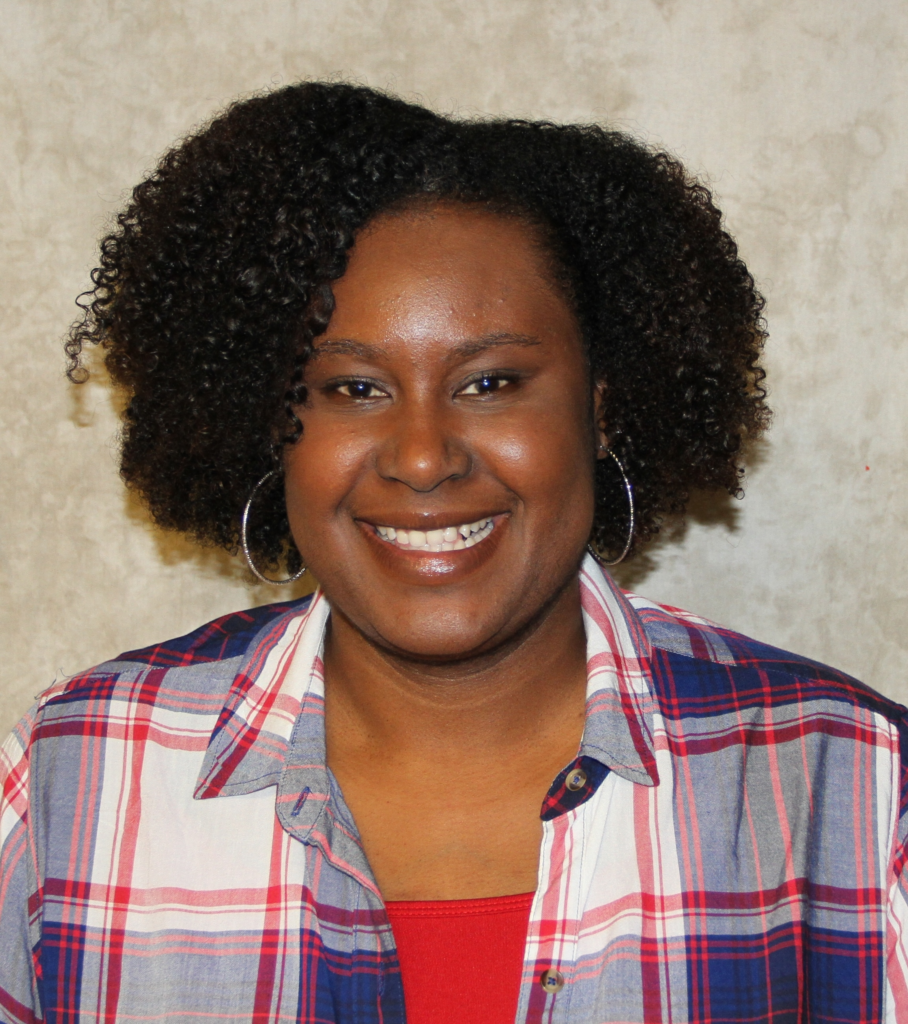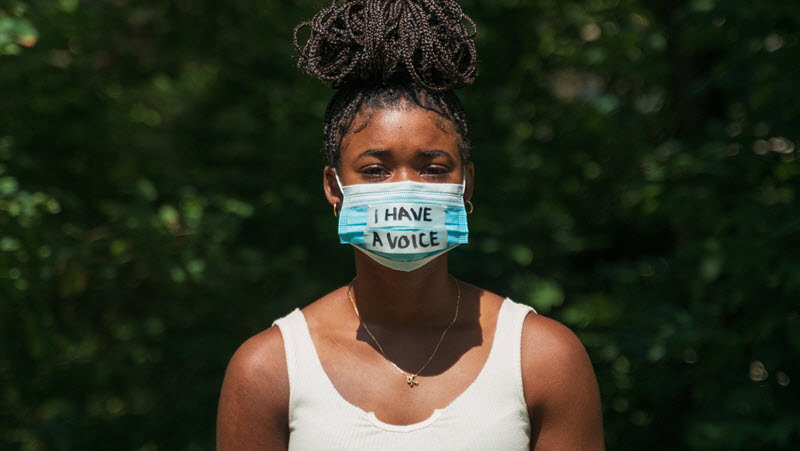| By Christine Estrada, librarian, Crockett Middle School & April Richmond, dean of students, Lamar Middle School |
Book Study/PLN
Twitter Tweet – “I would love it if we did a book study on STAMPED.”
-@CoachBRich, May29, 2020
I saw this post by April Richmond, a fellow educator in Irving Independent School District (ISD), on my social media timeline. As soon as I read it, I jumped in and agreed. I had never met Richmond but knew that she was the dean at a local middle school. Although initially excited by this exchange and the possibility of a book study, I thought the idea would just be an idea! Less than two weeks later, my principal, who saw the post on her timeline, asked if we could make this book study happen. So, I reached out to Richmond via Twitter.
Twitter DM, June 8, 2020: “Hi, April. I’m Christine Estrada, the librarian at Crockett. Are you interested in being a part of a Twitter book study?”
When I checked my notifications, I never imagined it would be in response to a tweet I’d sent Christine just a few weeks prior because, just like her, I thought my tweet would also just be an idea thrown out in the “Twitterverse”! But we excitedly agreed to move forward with an antiracism conversation with our colleagues.
After creating and submitting a proposal to our district’s professional development team, we got the OK and met virtually with the professional development (PD) team for guidance and feedback. We knew we wanted teachers to earn professional development credit, but more than that, we knew that discussing racism could have its challenges. At the suggestion of our PD team, it was recommended that we establish etiquette and norms for all participants so that everyone would feel comfortable sharing their thoughts and opinions. We wanted everyone to remain professional and respectful toward each other’s contributions as we embarked on this journey to analyze racism, anti-racism, and ourselves. Since we both had already read the book, we understood that as our colleagues begin to read and discuss it, emotions might rise and at times, it might be a bit uncomfortable. But our mission was to challenge our peers to grow as individuals as well as educators.
Together, we began setting our book study in motion, with Stamped: Racism, Antiracism, and You. We promoted the book study on Twitter with two middle schools. Soon other educators in our district saw these posts and reached out to ask if they could also take part in our book study. What began with just two schools grew to 12, including elementary and high schools. Richmond and I were excited to have 65 educators registered to participate, while also agreeing to be open, self-reflect, and grow with us. As we continued this journey, we asked our colleagues to use the #STAMPEDinIISD hashtag to post any aha moments to further the conversation and have a larger reach with our Twitter professional learning networks!
Virtual Educational Conferences
“How can I incorporate anti-racist books and discussions into my school/classroom library?”
At a recent Edcamp conference, educators completed virtual note cards on Jamboard stating what they wanted to learn at the session, entitled “The Library – A Hub for Antiracist Exploration.” One educator shared, “I need to have a wider and deeper knowledge of appropriate books in my library collection.” Like many other educators, I want to learn what it means to be an anti-racist teacher-librarian. Attending Edcamp conferences is one way to do that.
In this particular session, Ro Menendez, a librarian in Mesquite ISD, offered many resources that librarians could use in their own libraries. She the shared ways she helped her elementary students research and learn about social justice. Along with talking about her own school, she offered a Padlet of resources such as documentaries, books, and virtual sessions, which included the #KidLIT Rally for Black Lives, organized by authors Kwame Alexander, Jacqueline Woodson, and Jason Reynolds.
Menendez recommended books for classroom libraries, such as Ghost Boys, New Kid, and What Lane?. For professional libraries, she highly recommended This Book Is Anti-Racist: 20 Lessons on How to Wake Up, Take Action, and Do the Work by Tiffany Jewell and Being the Change: Lessons and Strategies to Teach Social Comprehension by Sara K. Ahmed. These resources can help to serve as a guide to actively engage in antiracist conversations and lessons with students of any age.
Virtual Author Panels
“What do you want your readers to take away from your books?”
Angie Thomas responded, “Seeing yourself in books gives you more value.” Thomas took part in the North Texas Teen Book Festival Presents Author Panel, entitled “Raise Your Voice.” Other authors on this panel included Nic Stone, Christina Hammonds Reed, and Kimberly Jones. Thomas went on to say, “[Your] stories matter . . . you’re not too much, or not enough, you’re perfect as you are. . . The way you talk is fine, the way you navigate the world is fine. . . You are legit as you are . . . you are good as you are.”
Thomas said it all: “You are worthy.” Similarly, in an Author Village Crowdcast with Brendan Kiely, Jason Reynolds spoke to his readers, specifically his young Black audience. He ended the conversation with: “We have no reason to hold our heads down, we have no reason to feel small, put your head up, stick your chest out, hold your shoulders back . . . we ain’t got no reason to be anyone other than who we are, we don’t got no reason to code switch . . . ain’t nothing wrong with us . . . be not afraid of all of your grandeur.”
What can we as educators take away from these comments by Thomas and Reynolds? These authors write books for Black children and young adults to tell them that they are worthy, that they already have power within them, that they are perfectly fine, that they don’t have to change to meet someone else’s standards, that they are not “other.” And to let them know that their stories matter, that they matter, that their lives matter. Why do these authors use their time to reiterate these points on virtual panels? Because every day, our Black children and young adults see, feel, and hear the complete opposite. There aren’t many stories, books, or movies that represent Black children. And the stories that are told don’t represent Black children as just children dealing with everyday issues. Nor do the books merely celebrate #BlackJoy.
What can we as educators and librarians do to elevate social justice? We need to read the books—then read these books to our students, take part in conversations with other educators, participate in book studies, listen to authors’ panels, include #OwnVoices in our book collections, and house these types of books in our classroom and school libraries. We are the ones who must continue to do the work by having conversations within our personal and professional learning networks and by learning from the authors who write social justice books.
Thorndike Press offers many social-justice themed titles in large print, a format that can help readers of all levels succeed. Learn more about the benefits of using large print with developing readers at gale.com/striving-reader.
Meet the Authors

Christine Estrada has been in education for 22 years and has served as the librarian at Crockett Middle School for the past five years. Estrada is passionate about providing books that serve as mirrors so that students see themselves represented in stories. In doing so, she feels that students will know that they are valued. She also encourages students to read books that serve as windows. She sees this as imperative so that students can learn about different cultures and ultimately gain empathy.

As the Dean of Students it is April Richmond’s desire to build positive relationships with her students, to inspire them to become well-rounded learners as they prepare to attend high school, and to ensure that they have a sense of belonging while they learn and grow at Lamar Middle School in Irving, TX. As she enters her 16th year in education, all at Lamar Middle School, her passion contributes to her students’ success.
Air Jordan 1 Mid “Pink Shadow” Coming Soon



